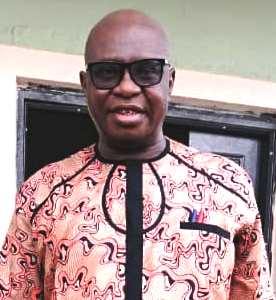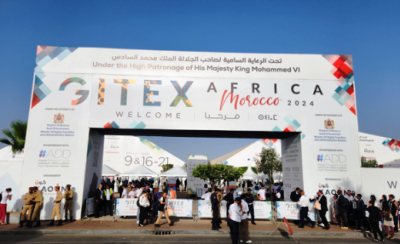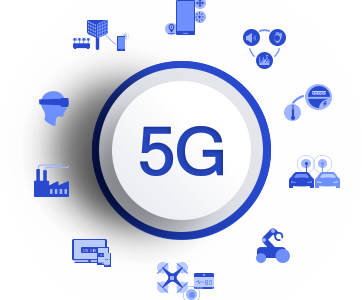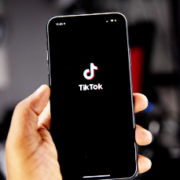By Sonny Aragba-Akpore
With 152.8 million subscribers connected to internet services as at November 2022,according to statistics published by industry regulator, the Nigerian Communications Commission (NCC),there are strong indications that the advent of Elon Musk’s Starlink may create a major upset in the country.
He has come with disruptive internet technology which has jolted the industry where existing service providers including Mobile Network Operators (MNOs) and internet service providers (ISPs) have returned to their closets to rejig their operational modules.
Starlink claims it will provide high speed internet of up to 500 megabytes per second (mbps) and this to many industry watchers will augment the growth of broadband which stands at 46.2% currently.
Starlink says it will provide services via satellite.
“One thing is clear; Starlink will create a major disruption in the telecommunications industry in Nigeria.”
The company got the NCC licence in 2022 to provide services in the country for which Communications & Digital Economy Minister; Dr. Isa Pantami announced early in December 2022 that the company assured him of commencing service provision by end of that month.
It’s however not clear whether the services are up and running. But one thing is clear; Starlink will create a major disruption in the telecommunications industry in Nigeria.
Starlink launched over 2,000 satellites in January 2022, with 1,500 operating in low earth orbit.
As other operators are panicky, some Nigerians and corporate organizations have started to pre-order routers in preparation for the promised fast speed internet connectivity.
In trying to rejig their operations, local operators are studying how the billionaire’s internet service plans to disrupt the industry in Nigeria especially since satellite internet can be accessed in the rural areas where the presence of the competition is not felt.
Reports had put the cost of price of the hardware including the antenna at $600, which is about N438, 000 in Nigeria. The company has also stated that its subscribers would pay $43 about N31, 390 monthly as the cost of subscription for the service.
Starlink’s new tier 1 internet service with higher performance of between 150 and 500Mbps with about 20 to 40 millisecond of latency is quite pricy.
The company is targeting to have about 12,000 satellites deployed worldwide with a possible later extension to 42,000 to underscore the massive disruption that is bound to happen in the market and why existing operators must either rework their engagement of the market or get off to die arguing over the viability of satellite internet services.
SpaceX announced it has reached more than one million subscribers as at December 2022, and with its presence in large markets like Nigeria, the potential to even-out its operating cost faster to gain traction with profit is higher.
Starlink is a satellite internet cluster operated by SpaceX providing satellite Internet access coverage to 45 countries. Since 2019 that SpaceX started launching Starlink satellites, it has successfully launched and maintained over 3,300 mass-produced small satellites in low earth orbit (LEO), which communicate with designated ground transceivers.
Analysts quote Star-link as saying it will take your money and give you speed adding it will take your money and give you speed and stability than ever experienced.
One analyst boasts that “Starlink,s delivery and credential elsewhere in over 40 countries may be sufficient for customers in Nigeria to dump their existing providers for the new satellite bride. “I fear for GSM operators even in spite of the yet to be fully explored 4G and the new 5G offerings.” a journalist ,who has knowledge of Starlink operations said: “the company could do to GSM operators what they did to CDMA operators over a decade ago to end the reign of the likes of Intercellular and Starcomms.
“Elon Musk’s Starlink is coming to the market at a higher price but with better promise of first rate service that could alter the scale not only in major urban centres like Lagos, Abuja and Port Harcourt but also in rural communities with major institutions where internet from existing service providers have remained costly and unreliable.
“In Lagos, an average Small Medium Enterprise (SME) pays some $25 to $50 as entry fee for terminal to sign up to a provider’s service and pays between $25 to $40 for monthly subscription that often comes with ‘managed frustration’ owing to frequent downtimes and lower than paid-for bandwidth speed.”
There are no fewer than 18 internet service providers licensed by the NCC and run their services on various technology platforms.
“With a sign on fee of $600, it will be herculean for rural dwellers which Starlink targets to sign on its network. Perhaps, the company has other considerations in its marketing profiling.”
There are 152,320,351 subscribers by Mobile Network Operators (MNOS) including MTN, Globacom, Airtel and 9Moble,
Fixed wired networks have 15,572 subscribers. The operators in this segment include IPNX, VGC Communications (MTN) and 21st Century.
Internet Service Providers for wired and wireless segment have 204,810 subscribers.Operators include Spectranet and Smile Communications. Voice over Internet Protocol (VoIP) operators have 350,737 subscribers. The operators are in various categories. Although, they occupy a major segment for users, these operators are essentially unclassified. They include Ntel and Smile Communications.
The idea is to improve and deepen internet and broadband penetration in Nigeria.
With an understanding of the Nigerian market and especially conscious of the dearth of internet in unconnected areas ,Starlink opted for satellite internet clusters and applied for a license from the NCC which was granted to it to operate on May 27,2022 .
The satellite, operated by SpaceX, one of Elon Musk’s companies aims to deliver a global broadband network, via Low Earth Orbit to provide high-speed internet coverage with capacity to penetrate rural and geographically isolated areas where internet connectivity is hardly available.
Low-earth orbit (LEO) satellites ensure connectivity to the unconnected rural and unconnected areas in order to bridge the digital divide.
But it’s certainly not going to be a tea party for subscribers as the cost of acquisition of the terminals and antenna may be beyond the reach of rural folks and ordinary people who have to grapple with grim realities of food and basic necessities of everyday living in Nigeria.
With a sign on fee of $600, it will be herculean for rural dwellers which Starlink targets to sign on its network. Perhaps, the company has other considerations in its marketing profiling. It’s too early to assume as things unfold.

Author: Sonny Aragba-Akpore. Former Information and Communications Technology/News editor at the Guardian Newspaper, was Head, Corporate Communications, NigComSat, and Head,Media & Public Relations,Nigerian Communications Commission

































